2014 Honda CRF125F and CRF125F Big Wheel Review

Good ol’ family fun is the focus behind the CRF line of trail bikes from Honda. From the CRF450X for Dad to the CRF50F for little Junior, Big Red has something for everyone. Now its latest models, the CRF125F ($2799) and CRF125F Big Wheel ($3199), aim to truly fulfill the company’s internal tagline of “having a bike for every butt.”
The 125F and 125F Big Wheel replace the popular CRF80F and CRF100F in the lineup, but crucially, retain the exact same seat height as their predecessors — 28.9 and 30.9 inches, respectively. The name gives the most obvious difference between the two bikes, as the 125F Big Wheel features larger, 19-inch wheels compared to the 17-inch hoops on the regular model.
Designed With Noobs In Mind
Last year, when conducting customer surveys and evaluating its product lineup, Honda realized some models could use a refreshing. Such was the case with the CRF70F in 2013 when the CRF110F replaced it. This year Honda capitalized on the opportunity to utilize a single engine in the CRF125F to replace both the 80F and 100F models, which were getting a bit long in the tooth. At the same time, the CRF125F would introduce kids and new riders to manual clutch operation.
THE COMPETITION: 2014 Kawasaki KX85 and KX100 Previews
Designed with broad, usable power in mind, the SOHC 124.9cc four-stroke engine is a long-stroke design, with bore and stroke measurements of 52.4mm x 57.9mm. Astute Honda heads will notice the bore dimension is actually smaller than that of the CRF100F’s 53.0mm. The 125’s relatively long stroke gives the 125 ample amounts of torque for its size. Fuel is fed to the cylinder through a carburetor.
The cam profile gives less valve overlap compared to the bikes it replaced, also aiding in bottom-end grunt, with peak torque arriving at 4500 rpm. Honda’s goal was to achieve a broad spread of power so kids could focus on riding instead of rowing through the 125’s four gears.
To make life easier for noobs, the 125F features electric start, though the kickstart lever remains as a backup. For dads looking to make gearing changes, the countershaft sprocket cover is no longer integrated with the ECG cover and is now a single piece, making it easy to remove for sprocket swaps. A redesigned airbox uses a reusable foam filter and has a higher intake volume than the 80F and 100F, resulting in more power.
Both 125 models share the same steel diamond-backbone frame with a 31mm telescopic fork, up 4mm from the 80F and 100F, and Honda’s tried-and-true Pro-Link suspension in the rear with a single shock. Front springs are stiffer and provide 5.5 inches of travel on the standard model, 5.9 inches on the Big Wheel. Rear travel is 4.5 inches on the standard, and 5.9 inches on the Big Wheel. Stopping the 125F is a 220mm single disc up front and a drum brake in the back.
Hitting All The Marks
To find out how the new 125Fs stack up on the trails, Honda invited journos to Hungry Valley State Vehicular Recreation Area (better known as Gorman to the locals due to its location), the second largest OHV area in California, to try out the 125F in its natural environment. Honda also brought most of the CRF trail line, from the 50F to the 230F, for the assembled guests and their families to try as well.
Since the 125F is meant for tweenagers, we enlisted the help of 13 year-old Duran Morley to take the bike, and its bigger siblings, for a romp around the trails. Standing at 5-foot, 3 inches, and weighing just a pepperoni slice over 100 pounds, Duran’s been riding for as long as he can remember.
After riding both the standard and Big Wheel versions of the 125F, what stood out for him was the flexibility of the engine. “It has really good response, especially from the bottom end,” he says. “I found a steep hill, put it in first, and it chugged all the way up.” Compared to the CRF150F, Morley says the power difference was marginal, but because of the broad range of torque, “I’d pick the 125 by far.”
“It’s a lot easier to ride than the 150, too,” noting how the 125’s suspension was firmer than its bigger brother. This gave him more confidence skimming over whoops or simply navigating a trail.
Morley liked the fit of the standard 125F better, noting the bars on the Big Wheel are too wide for his liking. And, if it were his bike, he’d get even narrower bars for the Small Wheel, too. The height difference between the two models wasn’t much of a factor, as he could flat foot on either bike, but when given the chance, Morley regularly chose to ride off on the standard 125.
He was impressed with the smooth, positive shifts from the four-speed tranny for the most part, but noted on some of the bikes he rode the last two gears weren’t as easy to engage as the first two. Adjustable levers are a nice touch to accommodate the growing hands of children.
I noticed Duran didn’t say anything about the brakes all day, so when I asked why his response was a simple, “They work fine.” An equally simple nod of the head confirmed the binders gave him good feel at the levers.
All told, Morley had a great time and was impressed with the new CRF125F. Other than the aforementioned handlebar swap, the only other mods he’d make would be better tires and different grips. Honda has delivered a rider-friendly yet surprisingly capable trail bike for tweens.
For someone like Morley, the CRF125 falls short of the performance offered from his current ride — a Kawasaki KX85 two-stroke — but the 125F’s capabilities are high enough to entertain even an experienced kid rider.
Click here for the full photo gallery of the 2014 Honda CRF125F and CRF125F Big Wheel

Troy's been riding motorcycles and writing about them since 2006, getting his start at Rider Magazine. From there, he moved to Sport Rider Magazine before finally landing at Motorcycle.com in 2011. A lifelong gearhead who didn't fully immerse himself in motorcycles until his teenage years, Troy's interests have always been in technology, performance, and going fast. Naturally, racing was the perfect avenue to combine all three. Troy has been racing nearly as long as he's been riding and has competed at the AMA national level. He's also won multiple club races throughout the country, culminating in a Utah Sport Bike Association championship in 2011. He has been invited as a guest instructor for the Yamaha Champions Riding School, and when he's not out riding, he's either wrenching on bikes or watching MotoGP.
More by Troy Siahaan










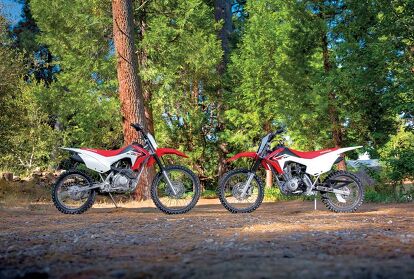














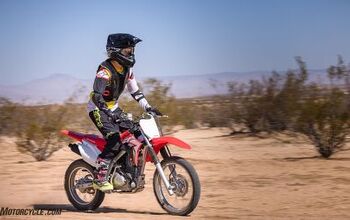


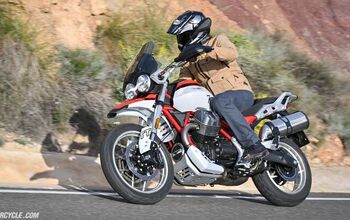

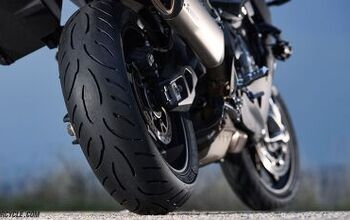







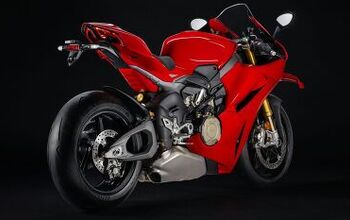

Comments
Join the conversation
Lucky kid!